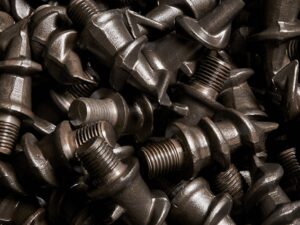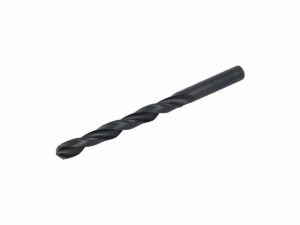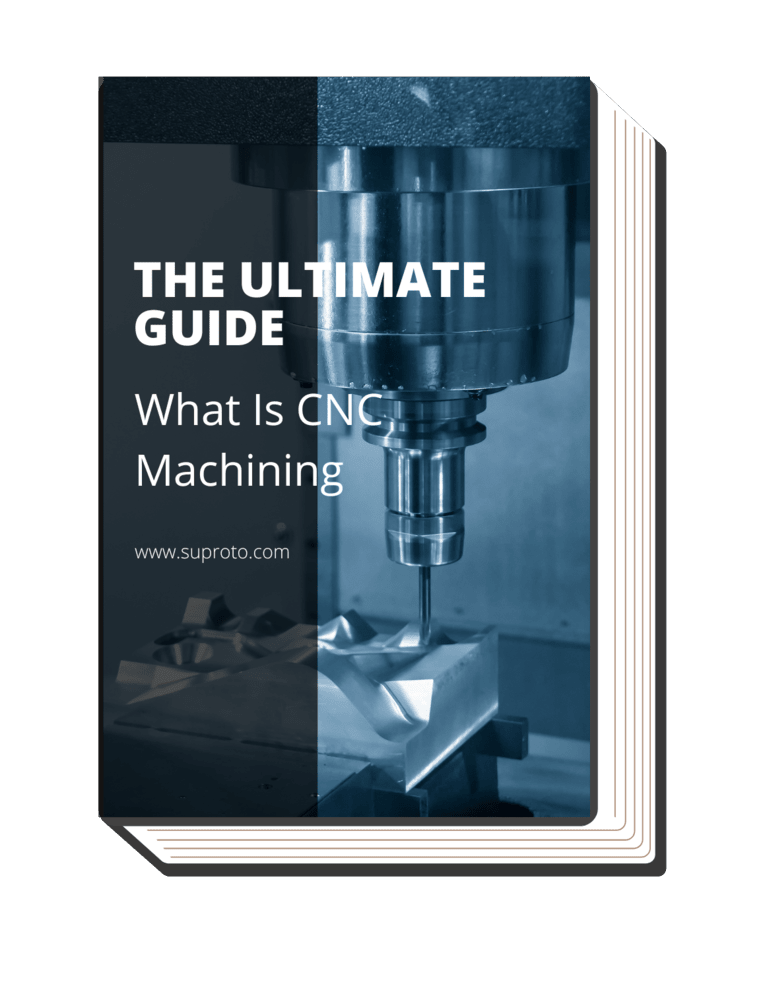1. Overview of QPQ Coating
QPQ coating, short for Quench Polish Quench, is a technique used in manufacturing metal parts to enhance their surface properties such as wear and corrosion resistance, lubricity, and fatigue resistance according to DEK. The process involves steps that can increase corrosion resistance, reduce friction, and improve heat resistance among other benefits, and is applicable to a wide variety of materials.
Additionally, it is known to be environmentally friendly and can be used on complex pieces, making it a versatile and desirable coating technique. In my view, the QPQ coating stands as a testament to how we can ingeniously manipulate material properties to suit our specific needs, perfectly embodying the blend of science and engineering.
2. Advantages of QPQ Coating
Quench Polish Quench (QPQ) is a powerful nitrocarburizing case hardening process known for its ability to enhance the physical properties of metal components. This process yields an array of benefits that make it indispensable in various industrial applications. We’ll explore some of the most significant advantages, including:
Enhanced Surface Hardness
QPQ coating hardens the surface of the metal part, enhancing its robustness. The process diffuses nitrogen, carbon, and oxygen into the surface, creating a harder-than-untreated surface. This hardened surface improves the part’s ability to withstand friction and stress, thereby contributing to a longer lifespan.
Improved Wear Resistance
One of the key advantages of QPQ coating is its remarkable wear resistance. Nitrogen atoms diffuse into the metal surface during the QPQ process, forming a hard and wear-resistant nitride layer. This nitride layer not only increases the wear resistance of the component but also fortifies the underlying substrate, making the component more durable.
Corrosion Protection
The final “quench” in the process optimizes corrosion resistance by creating a layer of iron oxide, making it more resistant to the effects of moisture and other contaminants. This characteristic makes QPQ-treated parts especially useful in harsh environments. For example, the use of QPQ coating on firearm components greatly enhances their lifespan and performance, underlining the practical importance of this process.
Dimensional Stability
Another essential advantage is the dimensional stability that the QPQ process offers. By reducing the distortion of the metal structure, this treatment ensures that the dimensions of the treated part remain consistent, thus preserving its functionality and fit. It’s a bit like a trusty pair of jeans, always fitting just right no matter how many times you wear them.
Cost-Effectiveness
The QPQ coating process is cost-effective. Despite the high performance it delivers, the QPQ process is quite affordable. In my experience, the QPQ process provides unparalleled value. This cost-effectiveness extends beyond the immediate cost of the treatment to the long-term savings realized through the enhanced durability and longevity of the treated parts.
3. Equipment and Technologies Used in QPQ Coating
The implementation of QPQ coating relies on several technologies and equipment. This process involves multiple stages that all contribute to the ultimate success of treatment. Here we’ll delve into some key equipment and technologies involved as presented below:
Salt Bath QPQ
Salt Bath QPQ is an essential component of the QPQ process. The method involves a standard salt bath nitrocarburizing cycle, which produces a layer of iron nitride. Sure, it’s no day at the spa, but for metal, this salt bath is just as rejuvenating.The treated workpiece is then re-immersed into the salt quench bath to optimize the corrosion resistance.
Nitrocarburizing
Nitrocarburizing involves heating the metal component in a nitrogen-rich environment and allowing nitrogen atoms to diffuse into the surface of the metal component. The Fellowship of Firearms stated that this diffusion results in a hard, wear-resistant nitride layer, which forms not only on the surface of the material but also penetrates the underlying substrate, forming a diffusion zone.

Oxynitriding
Oxynitriding is another important technology involved in the QPQ process. Oxynitriding helps to create the iron oxide layer on the treated part that significantly enhances corrosion resistance. It’s like giving the metal a sturdy umbrella for those inevitable ‘acid rain’ days. This is a critical aspect of the QPQ process, particularly for components that need to function in corrosive environments.

4. QPQ Coating Process Steps
The Quench Polish Quench (QPQ) is a specialized coating technique that offers remarkable enhancements in metal parts’ wear resistance, lubricity, and corrosion resistance. This methodical process undergoes several distinct phases, each contributing to the resultant superior qualities of the treated components. Let’s delve into these crucial stages.
Step#1 Preparing the Substrate
In the initial phase, the substrate or the metal component to be treated is cleaned and prepared. This step involves removing any existing rust, dirt, or oil on the component’s surface that could interfere with the QPQ process. Precise preparation is crucial, as it determines the quality of nitrocarburizing that follows, leading to a more predictable and consistent outcome.
Step#2 Nitrocarburizing
During nitrocarburizing, the prepared component is subjected to a nitrogen-rich environment, allowing nitrogen atoms to diffuse into the metal surface. This results in the formation of a tough, wear-resistant nitride layer, not only on the surface but also penetrating the substrate. This step significantly strengthens the surface of materials like carbon steel, stainless steel, and alloy steel, among others.
Step#3 Quenching
Quenching typically involves rapidly cooling the metal part in a specific liquid medium, often water or oil. This rapid cooling helps to “lock-in” the nitrogen and carbon into the metal’s surface, thus hardening it and increasing its wear resistance. Imagine the relief of an ice-cold drink on a hot summer day. That’s what quenching is to metals.
Step#4 Polishing
This could involve processes like vibratory finishing, lapping, or centerless grinding. Polishing helps to smoothen the component’s surface and improve its appearance, making it suitable for various industrial applications. In the same way, a good haircut can transform a person, a good Polish job can do wonders for a metal component.
Step#5 Post-Treatment and Finishing
The component is re-immersed into the quench bath, creating an iron oxide layer about 3 to 4 micrometers thick. This layer optimizes corrosion resistance and gives the part a visually appealing black finish. Suproto’s innovation in post-treatment and finishing ensures optimal corrosion resistance and aesthetic appeal through its advanced QPQ process.
5. Industrial Applications of QPQ Coating
The remarkable enhancement in the properties of metal components following QPQ coating finds myriad applications in several industries. Given its benefits such as improved wear and corrosion resistance, reduced friction, and increased heat resistance, sectors ranging from automotive to medical equipment heavily rely on this process. Let’s look at some of these key applications.
Automotive Industry
QPQ coated parts with its superior wear and corrosion resistance is an ideal choice for engine components such as camshafts and crankshafts, transmission parts, and other moving parts exposed to intense wear and friction. Many multinational automotive companies have extensively adopted this treatment in their manufacturing processes; some examples of these companies include Mercedes-Benz and Toyota.
The table below provides insights into the significance of QPQ coated parts in the automotive industry, highlighting their superior wear and corrosion resistance properties. Discover how multinational automotive companies like Mercedes-Benz and Toyota have embraced QPQ coating to enhance the durability and performance of engine components, transmission parts, and other critical moving parts.
| Automotive Industry and QPQ Coated Parts |
Description |
| Superior Wear and Corrosion Resistance |
QPQ (Quench-Polish-Quench) coating, also known as salt bath nitriding, provides automotive parts with exceptional wear and corrosion resistance. The QPQ process involves immersing the parts in a salt bath, where nitrogen diffuses into the surface, forming a hard and wear-resistant compound layer. This protective layer enhances the durability and longevity of engine components, transmission parts, and other moving parts subjected to intense wear, friction, and exposure to corrosive elements. |
| Adoption by Multinational Automotive Companies |
QPQ coating has gained significant adoption by multinational automotive companies, recognizing its value in improving the performance and reliability of their vehicles. Prominent automotive manufacturers such as Mercedes-Benz and Toyota have extensively integrated QPQ coated parts into their manufacturing processes. This widespread adoption reflects the industry’s confidence in the superior properties and benefits offered by QPQ coating, ensuring the production of high-quality and long-lasting automotive components. |
Aerospace and Defense
In the aerospace and defense industries, the need for parts with high fatigue strength and excellent wear resistance is paramount. QPQ coating serves as an ideal solution, providing parts like aircraft landing gears and military-grade weaponry with enhanced durability and reduced maintenance needs.
Oil and Gas Sector
In the oil and gas sector, components are often exposed to harsh conditions including high temperatures and corrosive substances. Here, QPQ coated parts, with their enhanced corrosion and heat resistance, offer long-lasting performance, reducing the need for frequent replacements.
Tool and Die Manufacturing
Tools and dies undergo intense wear and tear during their lifespan. With the application of QPQ coating, these tools can achieve greater wear resistance, reducing friction and subsequently prolonging their lifespan. It’s like giving them a superhero cape, ready to fight off that pesky villain known as ‘wear and tear’.
Firearms and Weaponry
QPQ coating has found extensive use in the manufacture of firearm slides and barrels. The process imparts a corrosion-resistant, hard surface that can withstand the rapid heat changes and mechanical stress typical of firearm operation. Suproto has become a trusted name in the QPQ coating application, enhancing the durability and performance of firearm slides and barrels.
Medical Equipment
In the medical industry, QPQ coating can be applied to surgical instruments and other equipment. As a long-time observer of the industry, I’m continuously impressed by the versatility of QPQ coating. With the medical instruments, being subject to repeated use and sterilization, benefit from increased corrosion resistance and reduced friction provided by the QPQ coating.
6. 6 Factors Affecting QPQ Coating Performance
The Quench Polish Quench (QPQ) coating process plays an instrumental role in augmenting the durability and resistance of various metallic parts across diverse industries. This enhancement, however, is not solely dependent on the coating process itself. Multiple factors influence the effectiveness of QPQ coating, which could potentially alter the end product’s performance. Here we will delve into four major factors:
#1 Material Composition
The chemical makeup of the material to be coated greatly influences the effectiveness of QPQ coating. Certain metals, such as carbon and stainless steel, are particularly well-suited to this process due to their hardness and abrasion resistance. QPQ nitriding serves to further increase this hardness, enhancing the metal’s wear and corrosion resistance but somewhat reducing its ductility.
#2 Surface Preparation
Proper preparation of the metal surface is crucial for successful QPQ coating. An uneven or poorly cleaned surface can hinder proper adhesion of the coating, reducing its long-term effectiveness. Research has shown that the impact of surface roughness on coating adhesion is multifaceted and can not be determined by a single statistical parameter.
#3 Process Parameters
The specific parameters of the QPQ process, including temperature, duration, and chemical concentrations, can significantly affect coating performance. For instance, the behavior of QPQ coating under dynamic loads found that even transient dynamic loads could dramatically alter the coating’s performance. Think of it as baking the perfect loaf of bread – everything needs to be just right for the best results.
#4 Quality Control Measures
Quality control measures are crucial for ensuring consistent and effective QPQ coating. Without adequate quality control, variances in the coating process can lead to inconsistencies and flaws in the final product. Recent trends have seen an increase in coating quality and uniformity, with a specific focus on both down-the-web and across-the-web uniformity.
#5 Nitriding Temperature
The temperature used during the nitriding phase of QPQ treatment significantly affects the microstructure and wear resistance of the coated material. Excessively high temperatures can also cause the precipitates in the diffusion layer to coarsen and change in morphology, potentially negatively impacting the wear resistance of the treated material.
#6 Transient Dynamic Loads
QPQ coating may behave differently under transient dynamic loads such as those experienced during well perforation in the oil and gas industry. Overstress failure in such conditions could lead to coating degradation, which might compromise the coating’s performance. Just like a well-tuned guitar string, it’s all about handling the pressure – it’s a harsh world down there in those oil wells.
Conclusion
As we continue to unravel its potential, QPQ coating stands as a significant player in fields ranging from infrastructure to biomedical engineering, paving the way towards a more sustainable and efficient future. But our exploration doesn’t stop here.
I personally invite you to engage with us. Please don’t hesitate to
contact us for more product details or any questions you might have. Together, we can harness the full potential of QPQ coating and revolutionize the world one layer at a time.


